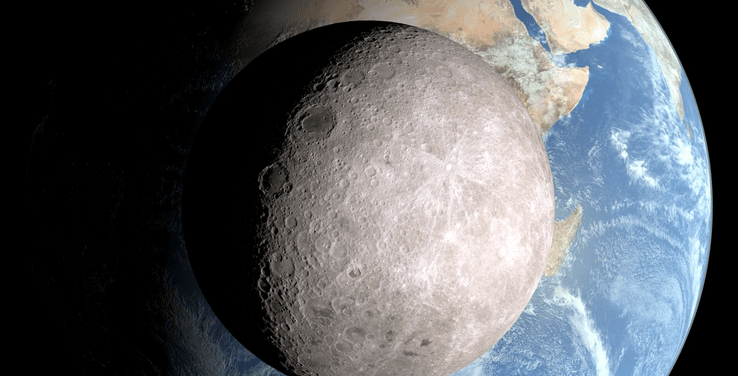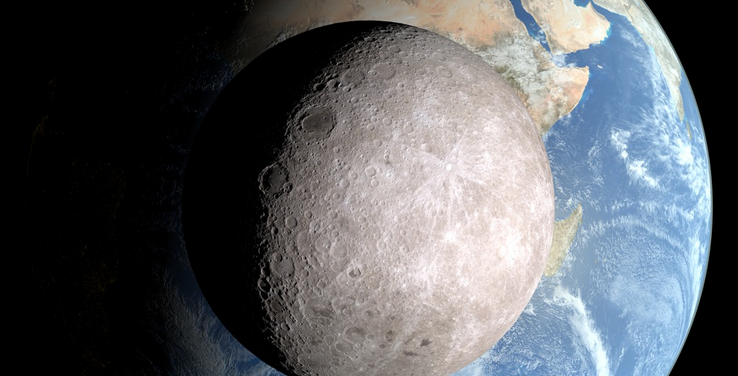

Achieving legendary status in 1973, Pink Floyd’s album “The Dark Side of the Moon” laid the foundation for a new musical era… and also laid the framework for a multi-generational misconception about Moon. Today, many people still assume that there really is a “dark side” to the Moon; however, this is not the case.
Of course, you may have already noticed that the visible area of the Moon that on any given night is always identical. But this doesn’t mean that the Moon is at a standstill. It still rotates. In fact, it takes the same amount of time for the moon to rotate around its axis as it takes for it to complete one orbit around Earth, resulting in something called tidal locking. In layman’s terms, this means that the moon always shows the same face to us, therefore, we only see a small sliver of its surface from our vantage point. However, since the moon is not tidally locked to the Sun, sunlight still reaches the parts we can’t see — the so-called ‘dark side of the moon’ (with that said, research has revealed that particular parts, especially those located near the lunar poles, aren’t basked in perpetual sunlight).
There are many factors involved in tidal locking, but at the end of the day, it boils down to the gravitational forces that are at play between Earth, the Moon and (to a lesser degree) the Sun. Take the tides, for example. The Moon makes the oceans and seas act like brakes on Earth, slowing the planet down. Simultaneously, Earth accelerates the Moon’s rotational speed. This means that, currently (and for the foreseeable future), the speeds at which the Moon and Earth rotate are slowly synchronizing.
Ultimately, this will lead to our planet becoming tidally locked to the moon as well. Don’t worry though, neither we nor our descendants will get to see this process. In fact, when it finally happens, the Sun will have already evaporated Earth’s oceans and consumed Mercury, Venus — and probably the Earth-Moon system as well — as it enters the red giant phase of stellar evolution (in short, it’s going to be awhile).
So, does this mean that we can only ever see 50% of the Earth? Not quite.
Based on the way that it orbits and rotates, are actually able see 59% of the Moon’s surface. And recently, NASA released a video that allows us to get a glimpse of the far side. In the release, NASA asserts:
Just like the near side, the far side goes through a complete cycle of phases. But the terrain of the far side is quite different. It lacks the large dark spots, called maria, that make up the familiar Man in the Moon on the near side. Instead, craters of all sizes crowd together over the entire far side. The far side is also home to one of the largest and oldest impact features in the solar system, the South Pole-Aitken basin, visible here as a slightly darker bruise covering the bottom third of the disk.
The far side was first seen in a handful of grainy images returned by the Soviet Luna 3 probe, which swung around the Moon in October, 1959. Lunar Reconnaissance Orbiter was launched fifty years later, and since then it has returned hundreds of terabytes of data, allowing LRO scientists to create extremely detailed and accurate maps of the far side. Those maps were used to create the imagery seen here.
So take a moment to get a glimpse of the other side…
